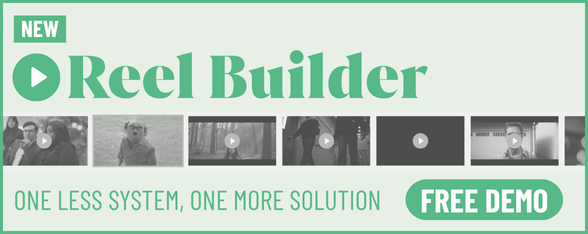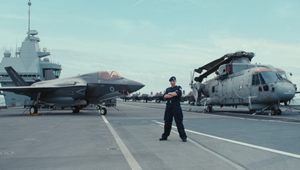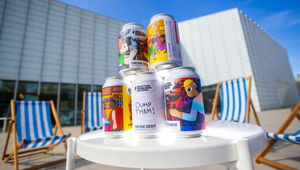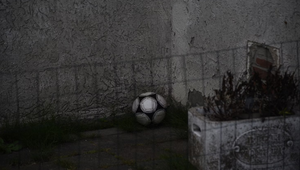
“We Need Curiosity. Not Paranoia,” Josh Green on Changing Attitudes towards AI

Josh Green is chief creative officer at House 337. Boston-born and now based in London, Josh has consistently created work that sits at the heart of culture, for brands such as Foot Locker, Jägermeister, Chivas Regal, Expedia, PlayStation, Cisco, AXE, and Liverpool FC. He was the author of Paddy Power’s headline-grabbing ‘Save our Shirt’ campaign.
Prior to joining House 337 in 2023, Josh was ECD of Octagon and sister agency FRUKT, leading the agency’s creative output and a department of 32 across six European offices.
Josh has been featured by the BBC, the Guardian, The Sun and Daily Mail, and his work has been recognised by British Arrows, the Marketing Society, Creative Circle, Drum Awards, BT Sports Industry Awards, Clios, and Contagious.
LBB> What’s the most impactful way that AI is helping you in your current role?
Josh> Right now, AI is a friction killer. It’s helping clear the creative runway faster. I’m not talking about the “write me a headline,” kind of stuff. I mean it’s genuinely changing how we prototype ideas.
A creative director can brief an AI model like they would a junior team, and within minutes they’ve got something to react to. Not perfect, but something to see. That’s a seismic shift.
LBB> We hear a lot about AI driving efficiencies and saving time. But are there any ways that you see the technology making qualitative improvements to your work, too?
Josh> Absolutely. Speed is the obvious one. But the real upgrade is in perspective.
AI can bring fresh, strange, sometimes uncomfortable takes that a room of humans, even brilliant ones, might not. It forces you to widen your lens. And when it works right, it’s like putting your creativity through a different culture’s filter.
You can test the shape of an idea across different realities, see how it behaves in other contexts, even simulate different audience reactions.
That kind of ‘what if’ power was never available on demand or at this scale before.
LBB> What are the biggest challenges in collaborating with AI as a creative professional, and how have you overcome them?
Josh> The biggest challenge is not letting it lower the bar. There’s a temptation to settle. AI gives you something good-ish quickly, and you stop pushing. That’s a killer.
So we treat it like an intern with infinite energy: brilliant at starting things, terrible at finishing them. The human eye and instinct still decide when something's actually good. You really need to know what great looks like to know when to say “this isn't it yet.”
That’s why training taste, helping people develop style, standards, and opinion, is more important than ever.
LBB> How do you balance the use of AI with your own creative instincts and intuition?
Josh> You’ve got to trust your gut more than ever.
AI will show you 100 variations of an idea in the time it takes to make a single slide. But it won’t tell you which one will make people feel something. That’s still our job.
AI is best as a sparring partner, not a co-writer. It sharpens the instinct, it doesn’t replace it. But instinct needs feeding. And we’ve got to train teams not just to use the tools, but to know what great looks and feels like.
That’s where creative taste and intuition come in.
LBB> And how do you ensure that the work produced with AI maintains a sense of authenticity or human touch?
Josh> You need to inject your own soul into it. That means rewriting, remixing, and most importantly, deciding what not to use.
Authenticity comes from the choices we make, not just the inputs we give.
You can use AI to explore a huge landscape of possibilities, but it’s human instinct that picks the one path worth walking. If our voices aren’t loud enough to survive a few rounds with the machine, we’ve got bigger problems than AI.
LBB> Do you think there are any misconceptions or misunderstandings in the way we currently talk about AI in the industry?
Josh> Loads. People either treat it like it’s the second coming or the end of days. It’s neither.
The most dangerous myth is that it’s ‘creative’. It isn’t. It’s reactive. It’s built on what’s been done, not what hasn’t. The job of a creative is still to do what hasn’t been done.
Creativity isn’t just output. It’s insight, empathy, lived experience. It’s connecting unexpected dots in ways a model can’t.
The magic is still in us, not the technology.
LBB> What ethical considerations come to mind when using AI to generate or assist with creative content?
Josh> Ownership is a big one. Whose work is it really? Also, are we training this thing on the sweat and tears of real artists without their say? Feels a bit like creative laundering if we’re not careful.
We need to be better than that and louder about how it’s being built and used. Transparency, consent, and respect for the original makers need to be part of the process. Otherwise, we’re just mining culture, instead of making it.
LBB> Have you seen attitudes towards AI change in recent times? If so, how?
Josh> Yes. Fear’s starting to turn into fascination. People were terrified it would take their jobs, now they’re seeing it might just change their jobs. That’s healthier. We need curiosity, not paranoia. The more people experiment, the more they realise this thing is a tool, not a threat. And if you’re good, it can actually elevate what you do.
LBB> Broadly speaking, does the industry’s current conversation around AI leave you feeling generally positive, or generally concerned, about creativity’s future?
Josh> Mostly positive. But only if we keep asking the hard questions. If we use AI to do better, braver things, not just cheaper ones, this could be a genuine creative renaissance. If we let it become a shortcut to mediocrity, we’re done for. It’s that simple.
LBB> Do you think AI has the potential to create entirely new forms of art or media that weren’t possible before?
Josh> Yes, and that’s exciting. Real-time generative experiences, infinite remixing, living brands that evolve as you interact with them. That’s all on the table now. We’re just scratching the surface. The tools are here. Now we need the guts to use them for something we’ve never seen before. It’s not about what AI can do. It’s about what we dare to try with it.
LBB> Thinking about your own role/discipline, what kind of impact do you think AI will have in the medium-term future?
Josh> It’ll change the shape of teams. You’ll have smaller, sharper creative units doing bigger, more ambitious things. Strategy will move faster. Design cycles will collapse. The big opportunity is that people will spend more time on ideas and less time wrangling decks and mockups. If we use it right, AI gives us back time to think. And that’s gold.















